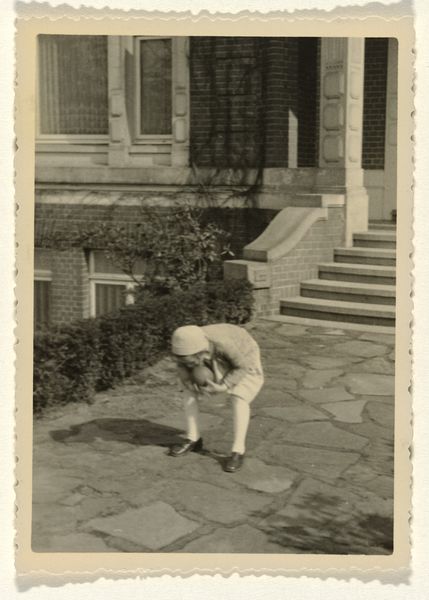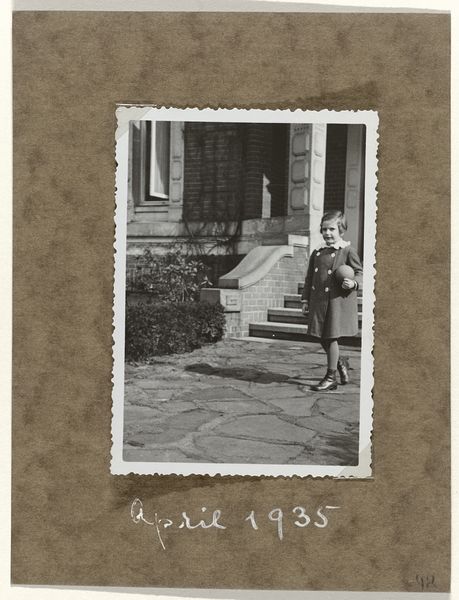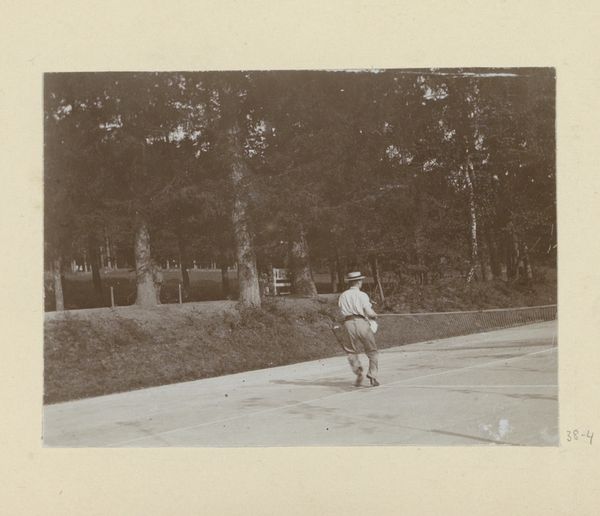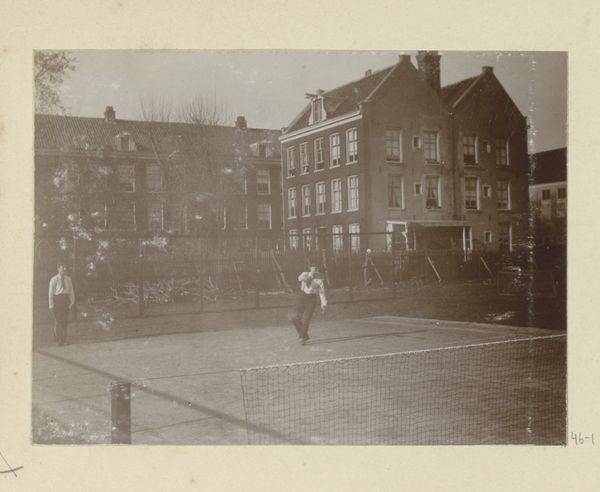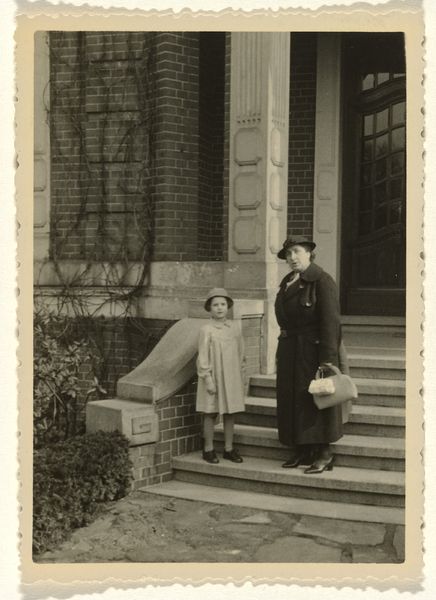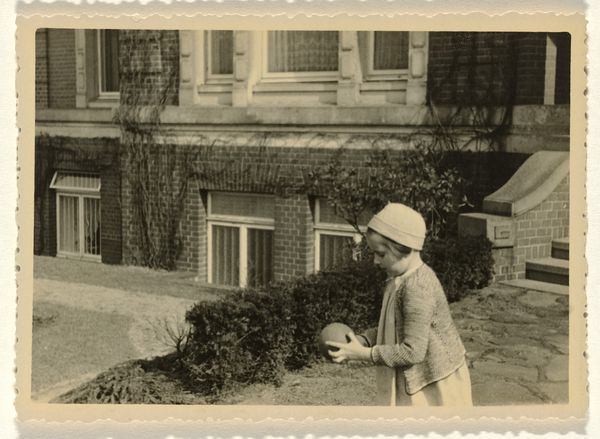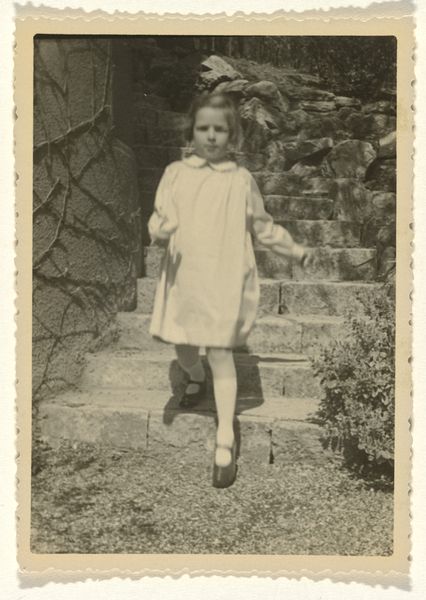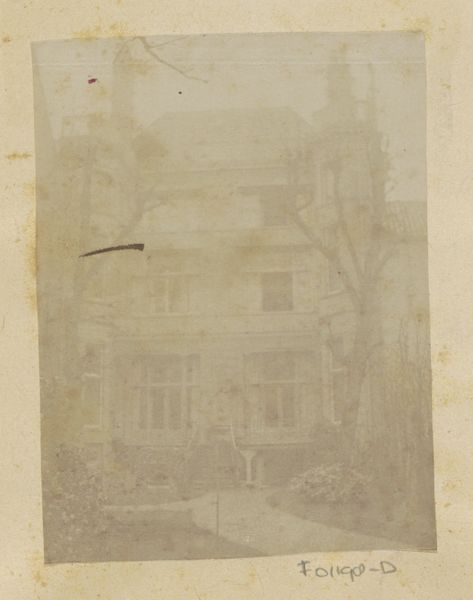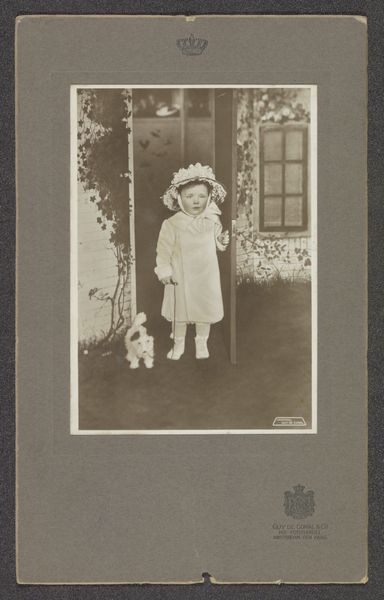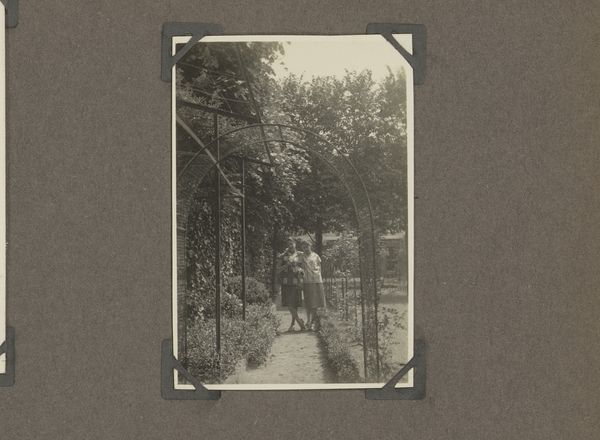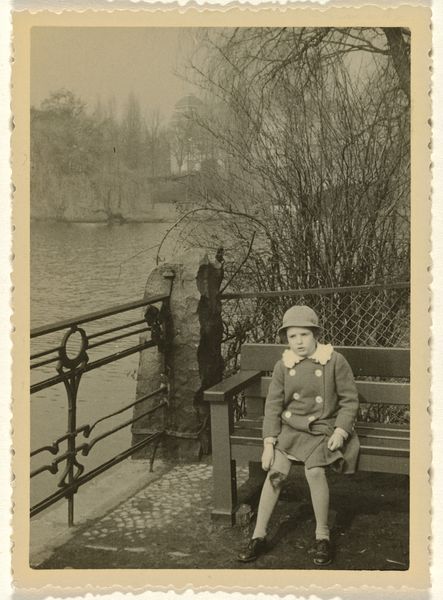
Isabel Wachenheimer in Hamburg, 1935 bij het huis van haar oom Willy Moos, Bellevue 62 1935
0:00
0:00
photography, gelatin-silver-print
#
portrait
#
print photography
#
archive photography
#
photography
#
historical photography
#
old-timey
#
gelatin-silver-print
#
cityscape
#
modernism
#
realism
Dimensions: height 90 mm, width 65 mm
Copyright: Rijks Museum: Open Domain
Curator: Looking at this photograph, what’s your immediate reaction? Editor: A kind of nostalgic stillness. The gray scale is heavy, and it evokes a wistful quietude. Curator: Yes, it does. This gelatin-silver print captures a moment in 1935 Hamburg. The piece is titled "Isabel Wachenheimer in Hamburg, 1935 bij het huis van haar oom Willy Moos, Bellevue 62." Editor: The materiality itself speaks volumes. Gelatin-silver, widely used then, signals mass reproducibility, but each print, of course, holds a unique aura. The slightly frayed edges also contribute to its identity as an object, as does its modest scale. It isn't trying to be monumental. Curator: Absolutely, its reproducibility situates the piece within the social framework of documentary photography. It’s a photograph documenting Isabel in a time filled with rising social unrest. Editor: I’m curious about the formal relationships at play. There’s the brick wall to the right, and how its line and the shadow play creates rhythm as you trace it into the background, setting a horizon, creating this visual pathway guiding our gaze. Curator: If we consider how the built environment intersects with personal experience, brick signifies permanence and property ownership, yet also serves to mark spatial divisions, potentially illustrating socio-economic stratification within a society rapidly becoming more segregated. Editor: Segregation is an interesting point, the wrought-iron gate sits firmly on the property perimeter almost as a symbol, not simply as a visual or compositional accent. The architecture frames Isabel but does it offer comfort? Curator: We're presented with a single figure centered in this photograph; Isabel Wachenheimer; she appears both confident and vulnerable as a symbol of the societal and material pressures present during this moment in time. Editor: I find that formal details amplify the tension. Thanks for sharing your insight. Curator: It’s a photograph that encapsulates how history shapes and informs identity on so many levels.
Comments
No comments
Be the first to comment and join the conversation on the ultimate creative platform.

